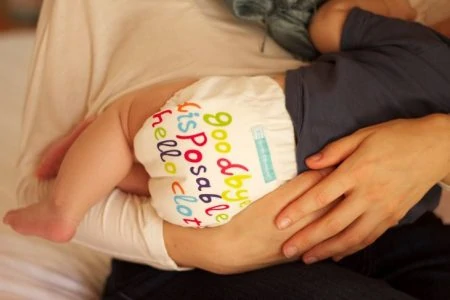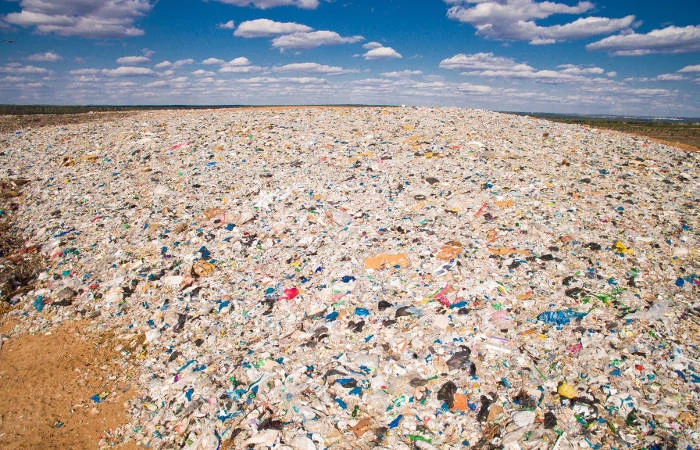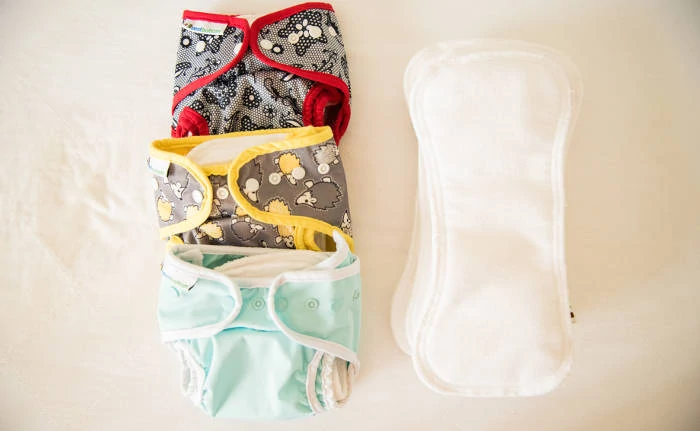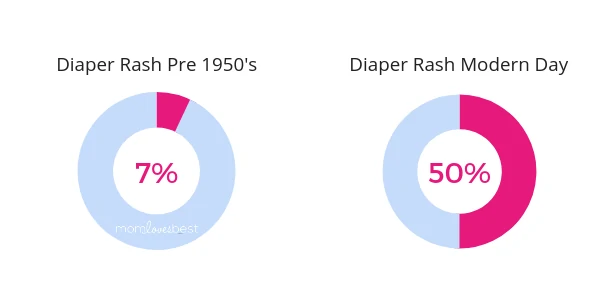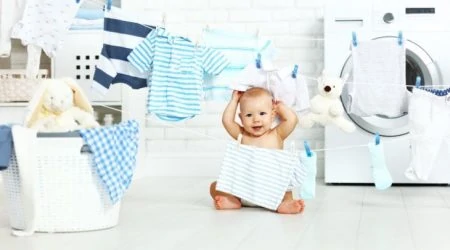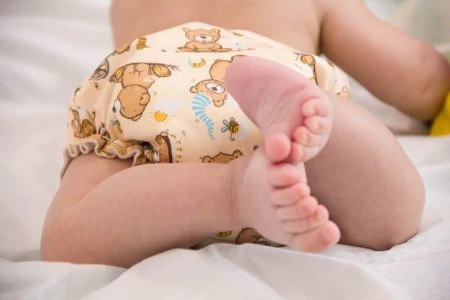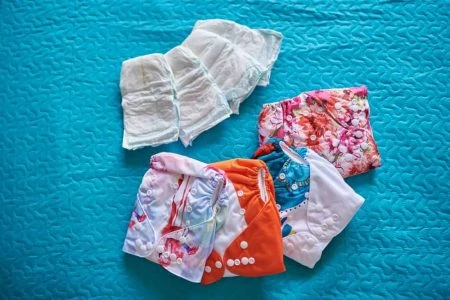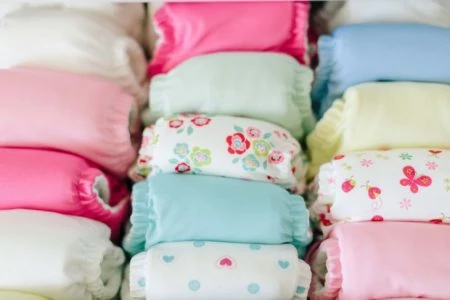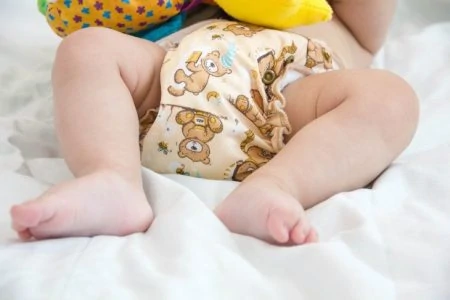Let’s be honest, diapers are expensive.
And if you’ve seen the photos of landfills piling up, you might be losing a little sleep over the environmental impact of all that plastic.
Whether you are trying to save your budget or save the planet, there are plenty of reasons to consider making the switch. This guide will walk you through the real benefits of cloth diapers so you can decide if they are the right fit for your family.

What’s the Deal With Disposables?
We live in a world of instant gratification. Fast food, fast shipping, and yes, disposable diapers.
Convenience is king, but more parents are realizing that convenience comes at a steep price. We are learning something our ancestors already knew; easier isn’t always better.
I get the allure of disposable diapers. It is less work for you. You don’t have to scrape, spray, or wash anything. You just toss it in the bin and move on with your day. But is it really that simple?
Statistic
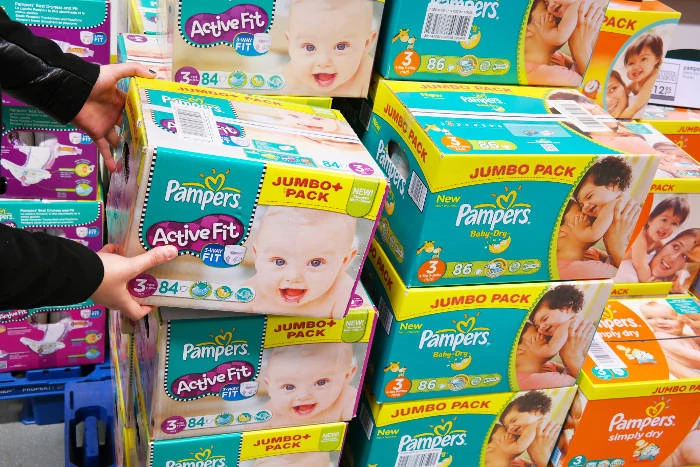
About 90 percent of American babies wear disposable diapers. That adds up to a staggering 27.4 billion diapers ending up in landfills every single year (1).
That number is enough to make anyone pause.
Statistic
Beyond the environmental impact, there is the financial drain. We all know families who are scraping by, yet they are forced to spend a significant portion of their income on something they literally throw in the trash.
While a parent will spend thousands to diaper one baby until they are potty trained using disposables, they would only spend a fraction of that on cloth diapers. The savings skyrocket if you have more than one child since you can reuse the stash (2).
Here are the hard stats on the cost of convenience:
- Over 200,000 trees are cut down every year just for U.S. disposable diapers (3).
- Manufacturing uses 3.4 billion gallons of fuel oil annually.
- Disposables generate over 3.5 million tons of waste each year.
- A single diaper can take 500 years to decompose.
1. Save a Significant Amount of Money
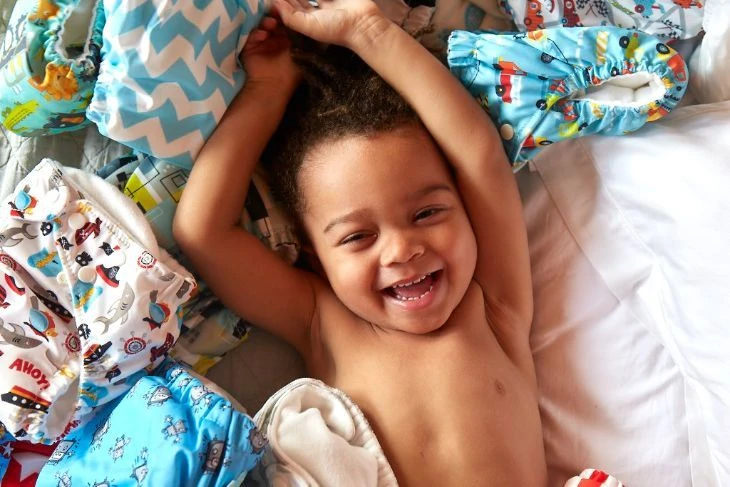
I remember the excitement of pregnancy; organizing the nursery and dreaming about baby names. But I also remember the anxiety over money. Like many young families, our cash flow was tight.
My biggest worries were childcare and diapers. My friends warned me about the cost, but I assumed cloth diapers were those complicated safety-pin contraptions from the 1950s.
If I had known how modern and easy cloth diapers had become, I would have switched instantly. Compared to disposables, they can save you a small fortune.
Your savings depend on the system you choose. Prefolds are cheap, while All-in-Ones (AIOs) cost more but are easier to use.
On average, expect to spend $7 to $20 for a high-quality cloth diaper. If you want a full stash to wash every other day, you will need about 24 diapers.
Sure, you can get by with fewer if you love doing laundry daily. But let’s be real; nobody loves laundry that much.
Michigan State University offers great hygiene and safety tips for handling dirty diapers at home.
The Upfront Costs
The main drawback is the upfront investment. However, you can start small with 10 or 15 diapers and build your collection slowly.
You may also need inserts. These absorbent layers suck moisture away from your baby’s skin.
Many modern diapers come with inserts, but extras usually cost around $2 to $5.
There are a few hidden costs to consider:
- A diaper sprayer to rinse off solids.
- Cloth-safe baby laundry detergent.
- Water and electricity for extra laundry cycles.
Generally, washing costs add up to less than $100 a year (5).
$150 Savings In The First Year
The massive savings arrive in the second year. While other parents are still buying boxes of Pampers, your stash is already paid for.
Total estimated cost for cloth diapering (including washing and accessories) until potty training is roughly $650 to $800.
$660 Savings For Your First Child
If you have a second child, you hit the jackpot. You reuse the same diapers, meaning your only cost is detergent and water.
$1300 Savings For Your Second Child
2. Reduce Your Carbon Footprint
Even “green” disposables use polymer crystals (SAP) to absorb urine. They work great for leaks, but is it worth wrapping your baby in chemicals 24/7?
Cloth diapers simply use fewer resources. This appeals to anyone trying to reduce their strain on the planet.
Consider the environmental toll of disposables:
- They create 60 times more solid waste than reusables.
- They use 20 times more raw materials, like crude oil.
- One baby in disposables consumes 300 pounds of wood and 50 pounds of petroleum feedstocks (7).
That doesn’t even account for the fuel used to transport billions of boxes to stores, and then to landfills. Switching to cloth is a tangible way to lower your family’s impact.
3. Reduce Landfill Waste
With 27.4 billion disposable diapers heading to U.S. landfills annually, we are essentially preserving dirty diapers for centuries.
Did You Know?
Given that we are depleting fresh water sources faster than ever, protecting groundwater is critical (9).
4. Less Harmful Chemicals
Many materials in disposables are linked to negative health outcomes, from skin irritation to endocrine disruption.
Here is a breakdown of what is lurking inside those white fluffy diapers:
5. Easier Potty Training
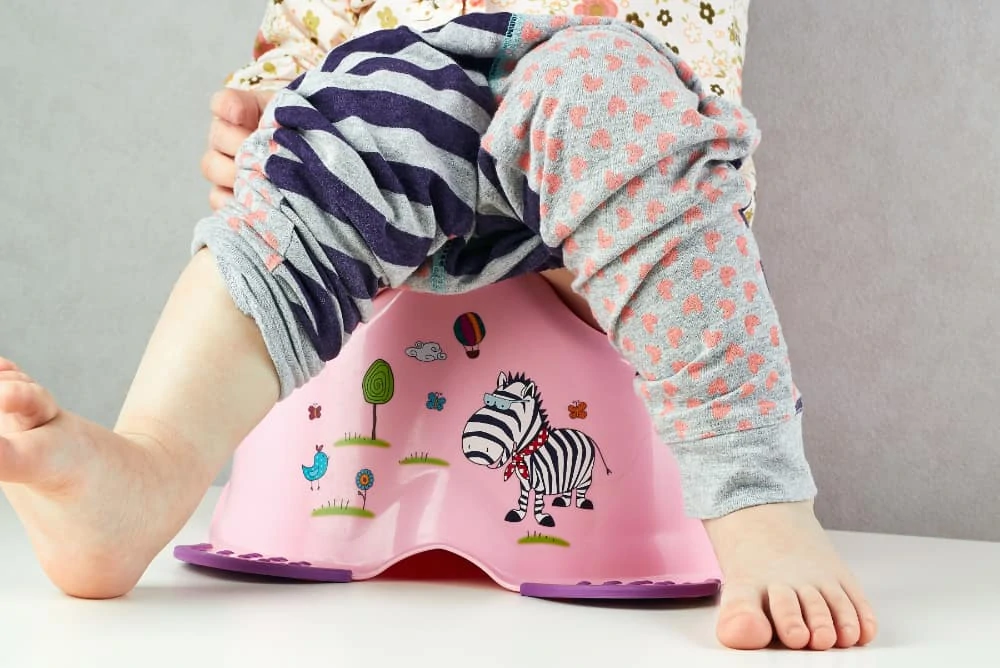
We all dread potty training, but cloth diapers might be the secret weapon you need.
How It Works
Disposable diapers work too well. They wick moisture away instantly, so your toddler feels dry even after a full bladder release. If they don’t feel uncomfortable, why would they want to stop playing to sit on a potty?
With cloth, that wet sensation is immediate. This creates a cause-and-effect connection in their brain: “I peed, and now I feel yucky.”
This feedback loop often motivates toddlers to use the potty chair earlier, saving you months of changing diapers.
6. Can Reduce Diaper Rash
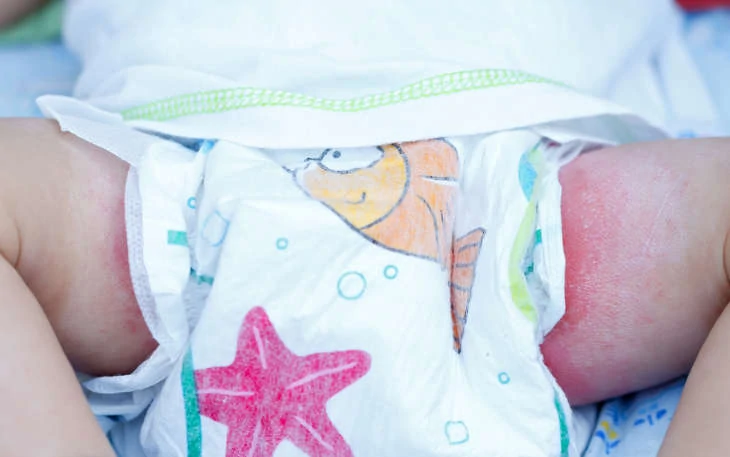
Diaper rash is the bane of early parenthood.
Common causes include:
- Prolonged moisture on the skin.
- Infrequent changes.
- Sensitive skin reactions.
- Chemical irritation from diapers or wet wipes.
- Yeast or bacterial infections.
Interestingly, diaper rash was much less common before the 1950s.
Today, about 50 percent of babies will experience a rash at some point.
While not a magic cure, many parents find relief by switching to cloth. Here is the logic:
- More Frequent Changes: Because the baby feels wet, you change them sooner. Fresh, dry diapers mean healthier skin.
- Fewer Chemicals: You avoid the fragrances, dyes, and plastics that often trigger contact dermatitis.
- Better Airflow: Natural fibers like cotton and wool breathe better than plastic, keeping the skin cooler and drier.
- Softer Materials: Cloth is simply gentler on sensitive areas than paper and plastic.
7. May Be More Comfortable
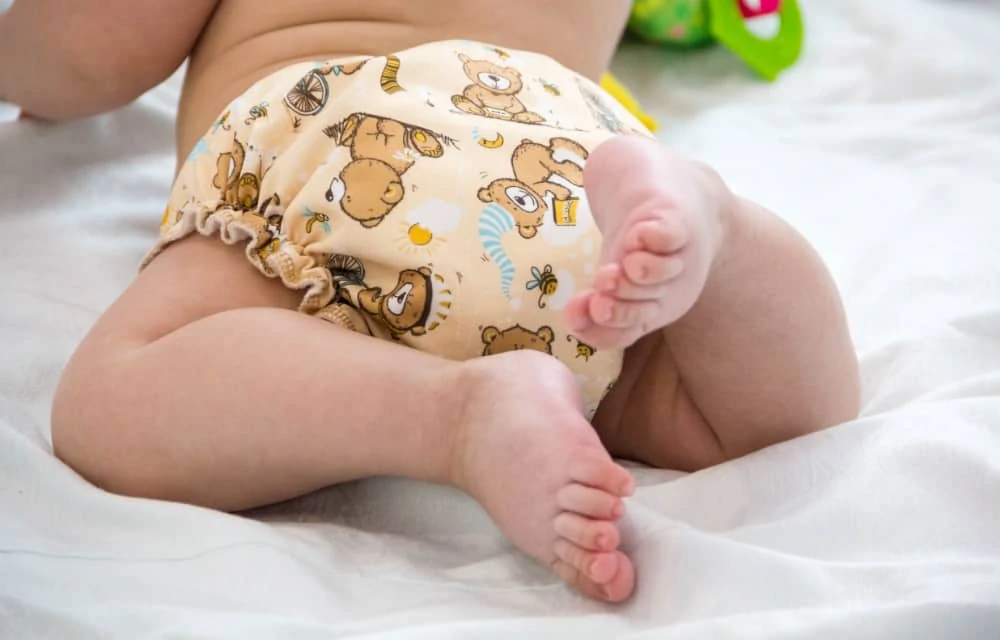
Imagine wearing plastic underwear 24 hours a day for three years. It doesn’t sound great, does it?
Cloth diapers act more like clothing. They utilize soft, breathable fabrics like cotton, bamboo, and hemp.
Why cloth wins on comfort:
- They are breathable, reducing that “swampy” feeling.
- They use natural fibers against the skin.
- Elastic around the legs is usually fabric-covered, not bare rubber.
Modern cloth diapers have also solved the “bulky and difficult” issues of the past:
- Better Fit: Elastic leg gussets prevent blowouts better than many disposables.
- Easy Fasteners: Snaps and Velcro have replaced safety pins.
- One-Stop Shopping: Buy them once, wash them, and you never have to run to the store at midnight because you ran out.
Note: One study showed that diaper type (cloth vs. disposable) had no impact on how early a child learns to walk (16).
8. Cloth Diapers Have Multiple Uses
A disposable diaper has one life: you use it, poop in it, and trash it. A cloth diaper is a multi-use tool that lasts for years.
Ways to reuse your stash:
- Siblings: Save them for baby number two (or three!).
- Resell: There is a huge market for used cloth diapers. You can get some of your investment back.
- Donate: Help a family in need through a diaper bank.
- Burp Cloths: Prefolds make the most absorbent burp cloths you will ever find.
- Cleaning Rags: They are perfect for washing cars, dusting, or cleaning up spills.
- First Aid: Keep a clean one in the car as an emergency compress or bandage.
9. Fantastic Designs and Materials
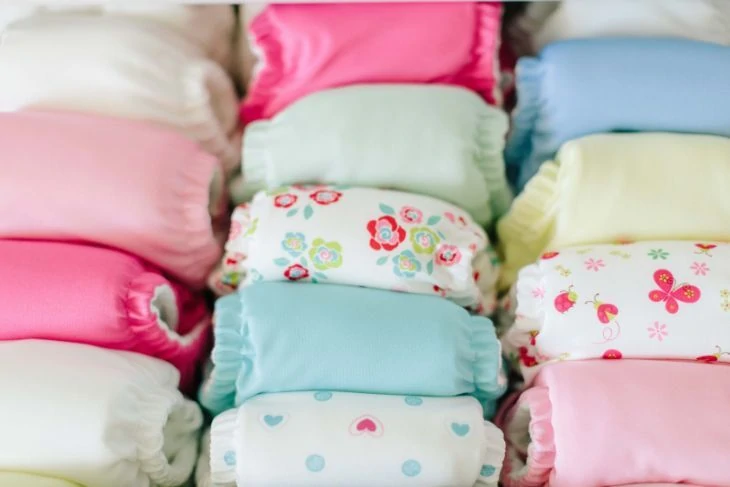
Let’s talk about the fun part: the fashion.
Disposable diapers look like… well, medical supplies. Cloth diapers come in adorable prints, vibrant colors, and custom designs. You can find everything from dinosaurs and florals to superheroes and abstract art.
You also have choices in materials:
- Cotton: The classic choice. Durable and absorbent.
- Bamboo: incredibly soft, antibacterial, and highly absorbent.
- Hemp: The thirstiest fabric. Great for heavy wetters and overnight use.
- Wool: A natural, breathable cover that is surprisingly water-resistant.
Warning: The prints are addictive. You might start buying them just because they look cute on the bum!
10. Community Support
There is a unique camaraderie among cloth-diapering parents. It feels a bit like a secret club.
Because it goes against the mainstream, cloth diaper parents are usually eager to help newbies. If you are struggling with a wash routine or leaky fits, there are thousands of parents online ready to give advice.
You aren’t just buying diapers; you are joining a community of people trying to do better for their kids and the planet.
Whatever method you choose, safety is key. Check out the CDC guidelines on healthy diapering habits.
Cloth Diaper FAQs
You’ve Got This, Mama
Breaking the mold is never easy, and choosing cloth diapers is definitely a commitment. But every diaper you wash is one less plastic bundle sitting in a landfill for 500 years.
You are saving money and helping the planet, one change at a time. That is something to be proud of.
